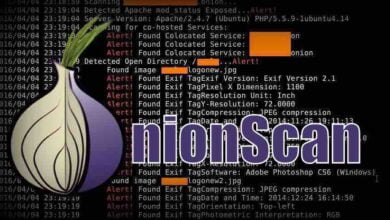Acunetix: Automating Web Application Security Testing for Robust Defenses
Ensuring Web Application Security with Acunetix's Automated Scanning and Vulnerability Assessment

In the ever-evolving landscape of web application security, organizations need robust tools to identify vulnerabilities and fortify their defenses. Acunetix, a leading web vulnerability scanner, offers automated scanning and comprehensive vulnerability assessment capabilities. In this article, we will explore how Acunetix empowers organizations to enhance web application security. We will discuss its usage, provide tips, highlight the top commands, and share tricks with examples to help you leverage Acunetix effectively.
Understanding Acunetix
Acunetix is a powerful web vulnerability scanner that automates the process of identifying security vulnerabilities in web applications. It employs various scanning techniques and advanced functionalities to detect vulnerabilities accurately and comprehensively.
Usage of Acunetix:
- Automated Web Application Scanning: Acunetix allows you to automate the scanning process by configuring the target URL or uploading a list of URLs. It scans web applications for common vulnerabilities such as injection flaws, security misconfigurations, and cross-site scripting (XSS).
- DeepScan Technology: Acunetix’s DeepScan technology enhances the accuracy of vulnerability detection by executing complex JavaScript-driven web applications. It can interact with the application, analyze dynamic content, and discover vulnerabilities that traditional scanners might miss.
- AcuSensor Technology: Acunetix’s AcuSensor technology enables deeper code analysis by integrating with the application’s source code. This technology provides more accurate results, reduces false positives, and enhances the efficiency of vulnerability detection.
Top 5 Commands for Acunetix:
- Target Scanning: Set the target URL or IP address to initiate a scan. Acunetix scans the specified web application for vulnerabilities and generates detailed reports.
- Scan Configuration: Customize the scan configuration based on your requirements. Specify the scanning depth, select vulnerability checks, and enable advanced options to tailor the scan according to the application’s complexity and sensitivity.
- Authentication Setup: Acunetix supports authenticated scanning. Configure the necessary credentials, such as usernames and passwords, to access restricted areas of the web application and perform comprehensive vulnerability testing.
- Vulnerability Management: Acunetix provides a vulnerability management feature to track identified vulnerabilities and their status. Use this command to monitor the progress of vulnerability remediation efforts and ensure comprehensive coverage.
- Reporting: Generate comprehensive vulnerability reports with Acunetix. Customize the report format, include relevant details, and prioritize vulnerabilities based on severity. These reports aid in communication, decision-making, and the prioritization of remediation tasks.
Tips and Tricks for Acunetix:
- Regular Updates: Keep Acunetix up to date with the latest version and vulnerability checks. Regular updates ensure that you have access to the most accurate and comprehensive vulnerability detection capabilities.
- Configure Scanning Frequency: Set up regular scans for web applications to identify vulnerabilities as they emerge. Adjust the scanning frequency based on the application’s criticality and update cycles.
- Collaborate with Development Teams: Involve development teams in the vulnerability remediation process. Share detailed reports and collaborate on fixing identified issues to ensure secure coding practices and a robust web application security posture.
- Explore Advanced Features: Acquaint yourself with Acunetix’s advanced features, such as Crawl Optimization, which allows you to customize and prioritize specific areas of the web application for scanning.
Example Use:
Consider a scenario where you are testing a web application for SQL injection vulnerabilities using Acunetix. After configuring the target URL, Acunetix automatically scans the application and identifies a potential SQL injection vulnerability in a user input field.
To exploit the vulnerability, you manipulate the input by injecting SQL code. Acunetix captures the injected code and alerts you about the vulnerability, providing detailed information on the potential impact and recommended remediation steps. With this insight, you work closely with the development team to implement proper input validation and protect the application from SQL injection attacks.
Acunetix’s automated scanning and vulnerability assessment capabilities empower organizations to enhance web application security effectively. Utilizing its features and top commands and following the tips and tricks discussed in this article, you can leverage Acunetix to detect vulnerabilities, prioritize remediation efforts, and fortify your web applications against potential threats.
Remember, responsible and ethical usage of Acunetix is crucial to ensure the security and integrity of web applications.




